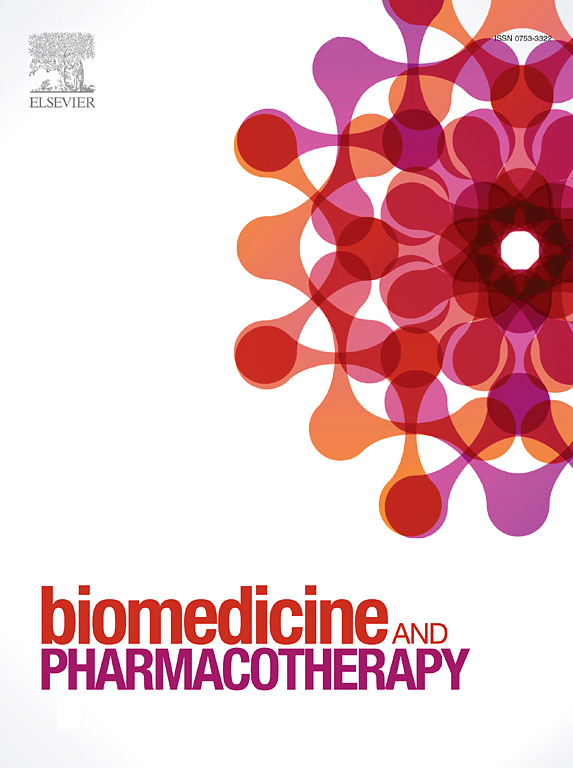巴西红蜂胶可减少口腔生物膜细胞的粘附力和弓形虫的胞内增殖。
IF 6.9
2区 医学
Q1 MEDICINE, RESEARCH & EXPERIMENTAL
引用次数: 0
摘要
传染病仍然是导致全球每年成千上万人死亡的重要原因。因此,本研究旨在采用体外、体内和硅学方法,研究从巴西红蜂胶(BRP)中分离出的粗水醇提取物和化合物对口腔病原体和弓形虫的抗菌和抗寄生虫活性。使用肉汤稀释法和棋盘试验分别测定了抗菌活性和协同活性。抗生物膜活性通过 2% 水晶紫染色和微生物计数进行评估。对 Caenorhabditis elegans AU37 幼虫进行了体内感染,并利用分子对接模拟进行了硅学分析。通过β-半乳糖苷酶比色法评估了对淋病双球菌生长调节的影响。最低抑制浓度值介于 3.12 至 400 µg/mL 之间。生物膜最低抑制浓度(MICB50)值在 6.25 至 375 微克/毫升之间,可存活细胞数量显著减少。此外,Guttiferone E 和粗萃取物还能减少细胞聚集并破坏生物膜细胞壁。最高浓度的粗萃取物和 Guttiferone E 能提高受感染幼虫的存活率,降低其死亡风险。Guttiferone E 和 Oblongifolin B 可抑制淋病双球菌在细胞内的增殖,并通过硅学分析证明了对细菌和淋病双球菌的多个作用靶点。这些数据表明,BRP 对临床相关病原体具有抗菌和抗寄生虫活性,将来可用作植物药。本文章由计算机程序翻译,如有差异,请以英文原文为准。
Brazilian red propolis reduces the adhesion of oral biofilm cells and the Toxoplasma gondii intracellular proliferation
Infectious diseases remain as a significant cause of thousands of deaths annually worldwide. Therefore, this study aimed to investigate the antimicrobial and antiparasitic activity of the crude hydroalcoholic extract and compounds isolated from Brazilian Red Propolis (BRP) against oral pathogens and Toxoplasma gondii, using in vitro, in vivo and in silico approaches. Antimicrobial and synergistic activities were determined using the broth dilution method and the checkerboard assay, respectively. Antibiofilm activity was evaluated by staining with 2 % crystal violet and counting microorganisms. In vivo infection was carried out in Caenorhabditis elegans AU37 larvae and in silico analysis was performed using molecular docking simulations. The effect on growth modulation of T. gondii was evaluated through a β-galactosidase colorimetric assay. Minimum Inhibitory Concentration values ranged from 3.12 to 400 µg/mL. Biofilm Minimum Inhibitory Concentration (MICB50) values ranged from 6.25 to 375 µg/mL, with a significant reduction in the number of viable cells. Furthermore, Guttiferone E and the crude extract reduced cell aggregation and caused damage to the biofilm cell wall. The highest concentrations of the crude extract and Guttiferone E increased the survival and reduced the risk of death of infected and treated larvae. Guttiferone E and Oblongifolin B inhibited the intracellular proliferation of T. gondii and demonstrated several targets of action against bacteria and T. gondii through in silico analysis. These data demonstrate that BRP has antimicrobial and antiparasitic activity against pathogens of clinical relevance, and can be used in the future as phytomedicines.
求助全文
通过发布文献求助,成功后即可免费获取论文全文。
去求助
来源期刊
CiteScore
11.90
自引率
2.70%
发文量
1621
审稿时长
48 days
期刊介绍:
Biomedicine & Pharmacotherapy stands as a multidisciplinary journal, presenting a spectrum of original research reports, reviews, and communications in the realms of clinical and basic medicine, as well as pharmacology. The journal spans various fields, including Cancer, Nutriceutics, Neurodegenerative, Cardiac, and Infectious Diseases.

 求助内容:
求助内容: 应助结果提醒方式:
应助结果提醒方式:


